Disclosure: This post may contain affiliate links, meaning we get a commission if you decide to make a purchase through our links, at no cost to you. See our full disclosure here.
Alright, dirt divas and dudes, let’s talk about flavor – big flavor, in fact. But first, a little story. Picture this: me, Ivy Green, strolling through the supermarket, staring down a tomato. Not just any tomato, mind you, but one of those sad, pale, mealy excuses for a tomato. It looked like it had given up on life. And honestly, I almost did too. I mean, who wants a tomato that tastes like cardboard? Nobody, that’s who! Living in a cozy little apartment means I don’t have a sprawling garden (yet!), but that doesn’t mean I have to sacrifice fresh, delicious veggies. That’s where the magic of container gardening for veggies comes in.
Container gardening for vegetables is basically like having a mini-farm right outside your door–or even inside your door, if that’s your jam. It’s all about growing your favorite veggies in pots, containers, or any other vessel that can hold soil. Think balconies, patios, windowsills–even rooftops! It’s perfect for apartment dwellers, balcony gardeners, anyone with a postage-stamp-sized yard, or even those who just want to keep their herbs close at hand while cooking. Seriously, if you’ve got a bit of sunlight and a dash of sass, you can grow your own food.
Now, let’s get one thing straight: Container gardening for vegetables is more than throwing some dirt in a pot and hoping for the best. It’s an art, a science, and a whole lot of fun. It’s about choosing the proper containers for your plants (because a tiny pot for a giant plant is a recipe for disaster, darlings), picking the best veggies that will thrive in containers, and bringing your own personal sassy touch to the whole shebang. Because let’s be real, gardening should reflect you.
So, here’s the deal: Container gardening for veggies is a fantastic way to grow your own delicious food, even if you only have a tiny space. Ready to ditch those sad supermarket tomatoes and grow your own way? Let’s get started!
Choosing the Right Containers for Container Gardening for Vegetables
Alright, my little sprouts, let’s talk about the digs – the containers, that is! Because just like you wouldn’t wear your stilettos to muck around in the mud (unless you’re really committed to fashion), your plants need the right home to thrive.
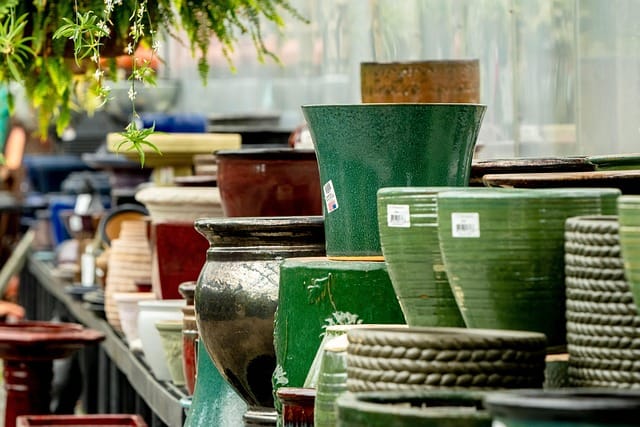
Material Matters:
First things first, let’s talk about materials. Think of your containers as the wardrobe for your veggies. You’ve got terracotta, plastic, metal–the whole shebang. Terracotta pots are classic and look gorgeous, but they can dry out quickly. Plastic is lightweight and keeps moisture better, but sometimes they can look a little…blah. Metal? Super chic, but they can heat up in the sun like a sauna for your roots. So, what should you do? Consider your climate, your style, and how much time you want to spend watering. We want pretty and practical, remember?
Size and Shape:
Now, size matters, especially with container gardening for vegetables. A tiny pot for a giant tomato? Honey, no. That’s like trying to squeeze into your skinny jeans after Thanksgiving dinner–it ain’t gonna happen. Different veggies have different needs. Leafy greens like lettuce and spinach can be happy in smaller pots, while tomatoes, peppers, and eggplants need more room to spread their roots. Think big for your big veggies, and you’ll be golden.
Drainage is Key:
Speaking of happy roots, let’s talk drainage. This is crucial, people. Soggy roots are sad roots, and sad roots mean sad plants. Make sure your containers have drainage holes–and I mean real drainage holes, not just a couple of pinpricks. If your pot is holding water like a bathtub, your plants are going to be swimming in trouble. Nobody wants that.
Location, Location, Location:
Finally, let’s talk location. Just like you need your Vitamin D, your plants need sunlight. Some love the full sun, while others prefer a little shade. So, before you plop your pots down, think about where the sun shines in your space and choose your veggies accordingly. Your plants will thank you with a bountiful harvest. Now, go find the perfect digs for your veggie babies!
Best Vegetables for Container Gardening for Vegetables (and How to Grow Them)
Time to talk about the stars of the container gardening show–the veggies themselves! We’re diving headfirst into some serious flavor, so get your taste buds ready.
Salad Sensations:
First up, the salad superstars: lettuce, spinach, and kale. These leafy greens are container gardening MVPs. They’re compact, they grow quickly, and they’re delicious! Lettuce is a cool customer–literally. It prefers cooler temperatures, so spring and fall are its jam. Spinach is another cool-season champion, packed with vitamins and ready to be tossed in a salad or sauteed. Kale, the queen of the greens, is a nutritional powerhouse and surprisingly easy to grow in containers. Just give them some well-draining soil, consistent watering, and a little sunshine, and you’ll be swimming in salad fixings.


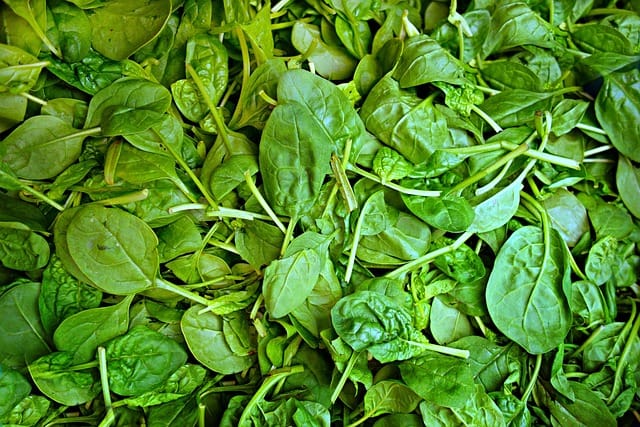
Tomato Tango:
Now, for the headliners: tomatoes! These juicy gems are a container gardening classic. But let’s be real, growing tomatoes in containers can be a little tricky. First, choose your variety wisely. Indeterminate varieties (the ones that keep growing and producing all season) need staking or caging, while determinate varieties (bush types) are more compact. Staking is essential–nobody wants a tomato plant flopping all over the place. And pruning? Just snip off those suckers (the little shoots that grow between the main stem and the branches). It’ll help your plant focus its energy on producing delicious tomatoes.
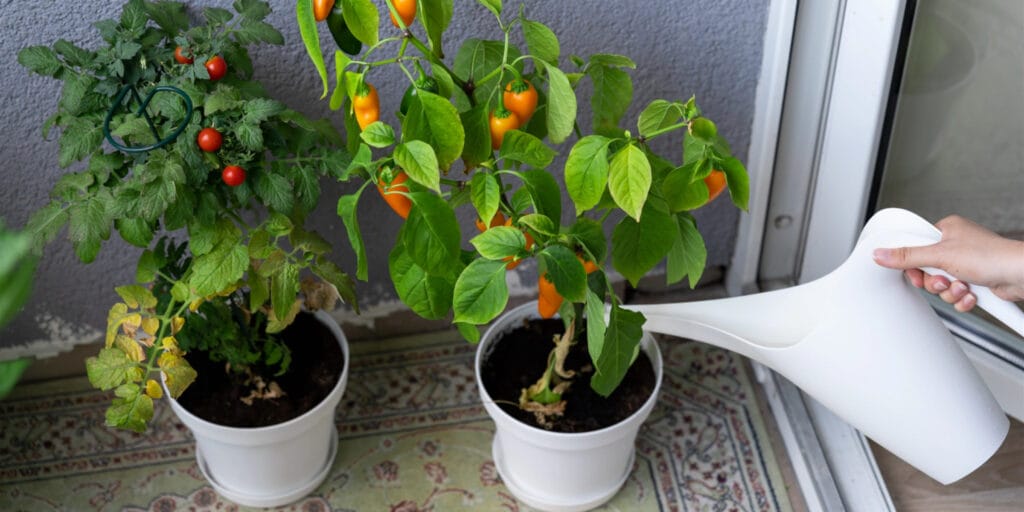
Pepper Power:
Next up, the spice rack of the garden: peppers! Bell peppers, chili peppers, sweet peppers–they all thrive in containers. Just like tomatoes, they need plenty of sunshine and consistent watering. But here’s a little secret: peppers love company! Plant some basil or oregano nearby to keep pests away and boost their flavor. It’s like a little pepper party in a pot!
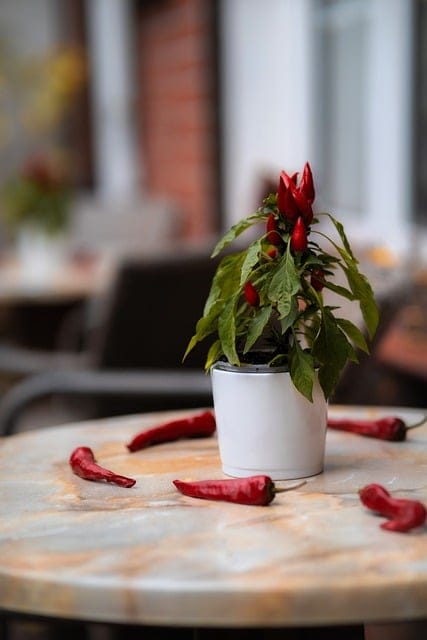
Herb Heaven:
No container garden is complete without herbs. Basil, mint, thyme–these fragrant beauties are a must-have. They’re easy to grow, they smell amazing, and they’ll elevate your cooking to a whole new level. Just give them some sun, well-draining soil, and harvest them regularly. The more you pick, the more they grow!
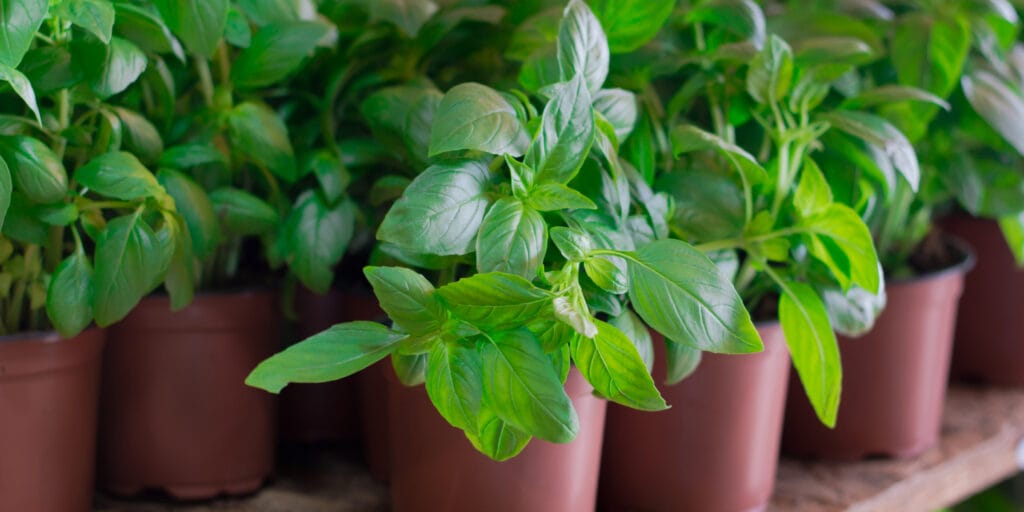
Other Container-Friendly Veggies:
Don’t forget about the other container gardening rock stars! Bush beans are compact and prolific, cucumbers can be trained up a trellis, and strawberries are surprisingly happy in pots. You can even grow dwarf varieties of fruit trees in containers! Imagine plucking a fresh peach from your balcony–talk about bougie! So, get creative, experiment, and grow your own way!
Soil and Nutrients for Container Gardening for Vegetables
Alright, my little root whisperers, let’s talk about the foundation of your container garden – the soil! You wouldn’t build a house on a shaky foundation – your plants need a solid foundation as well.
The Right Stuff:
Now, listen up, because this is important: Don’t use garden soil in your containers. I repeat, do not use garden soil. I know, I know, it seems like dirt is dirt, right? Wrong! Garden soil is often too dense for containers. It doesn’t drain well, which can lead to root rot (and we already talked about how sad soggy roots are). Plus, it can contain pests and diseases that you don’t want in your precious container garden.
Instead, you need a good-quality potting mix. This stuff is specifically formulated for containers. It’s light, airy, and drains like a dream. Think of it as a fluffy cloud for your roots to snuggle in. Your plants deserve the best, and a good potting mix is the key to their happiness.
Feeding Time:
Speaking of happy plants, let’s talk about feeding time. Plants need nutrients to grow big and strong. And because container plants have a limited amount of soil, they need a little extra help. That’s where fertilizers come in.
There are tons of different fertilizers out there–granular, liquid, slow-release–it can be overwhelming. But don’t worry, I’ll break it down for you. Granular fertilizers are like little vitamin pills for your plants. You mix them into the soil, and they release nutrients slowly. Liquid fertilizers are like a quick shot of energy. You mix them with water and apply them directly to the soil. Slow-release fertilizers are like a time-release capsule. They provide a steady supply of nutrients over several months.
So, which one should you choose? It depends on your plants and your preferences. Just remember, a little boost goes a long way. Don’t overdo it, or you’ll risk burning your plants. Follow the instructions on the fertilizer label, and your plants will be well-fed and happy.
Watering and Maintenance for Container Gardening for Vegetables
Alright, my little water wizards, let’s talk about the lifeblood of your container garden–water! Because, just like us, plants need a good drink to stay happy and healthy. But here’s the thing: too much water is just as bad as too little. It’s all about finding that Goldilocks zone–not too much, not too little, just right!
The Goldilocks Rule:
So, how do you know when your plants need a drink? Well, there are a few ways to tell. First, stick your finger about an inch into the soil. If it feels dry, it’s time to water. Another way is to look at the leaves. If they’re wilting or drooping, they’re probably thirsty. And finally, you can lift the pot. If it feels light, it needs water. But remember, every plant is different, so pay attention to their individual needs. Some plants like to be kept consistently moist, while others prefer to dry out a bit between waterings. It’s all about getting to know your plants and their quirky personalities (don’t judge, a personality quirk can be a good thing😉.)
Mulch Magic:
Now, let’s talk about a little trick that will make your life easier–mulching! Mulch is like a cozy blanket for your soil. It helps retain moisture, suppress weeds, and keep the soil temperature even. You can use many things for mulch–straw, wood chips, shredded leaves–whatever floats your boat. Just spread a layer of mulch on top of the soil, and you’ll be amazed at the difference it makes. It’s like magic, I tell ya!
Pest Patrol:
And finally, let’s talk about those pesky little critters that can sometimes invade your container garden–pests! Aphids, spider mites, slugs–they’re all out to get your precious veggies. But don’t worry, I’ve got some sassy tips for dealing with them. First, prevention is key. Keep your plants healthy and happy, and they’ll be less susceptible to pests. Second, inspect your plants regularly for any signs of trouble. And third, if you find pests, take action quickly. You can try spraying them with a mixture of soapy water or neem oil. Or, if you’re feeling brave, you can handpick them off. Just remember, don’t let those pests get the best of you. You’re the boss of your container garden, so show them who’s in charge!

Ivy’s Pro Tip: When you see damage to leaves, but no bugs, it’s time to play detective. Grab a flashlight and inspect your plants after dark. Many bugs only come out after dark, and this is a great time to see who is eating your leaves.
Container Gardening for Vegetables–Design Tips for a Stunning Display
Let’s talk about making your container garden a feast for the eyes and the stomach! Because who says you can’t have beauty and bounty all in one pot?
Vertical Vibes:
First up, let’s go vertical! If you’ve got limited space (or even if you don’t!), vertical gardening is your secret weapon. Think trellises, hanging baskets, stacked planters–the sky’s the limit! Cucumbers climbing a trellis? So chic. Herbs cascading from a hanging basket? Totally Instagrammable. Vertical gardening not only maximizes your space, but it also adds a touch of drama and visual interest to your container garden. It’s like a mini-jungle on your balcony!
Color Me Happy:
Now, let’s talk color! Get creative with your containers and plants. A bright red tomato against a deep blue pot? Stunning! A mix of colorful flowers and vibrant veggies? Absolutely gorgeous! Think about using companion planting to add pops of color and attract beneficial insects. Marigolds are a classic companion plant for tomatoes–they help deter pests and add a splash of sunshine to your garden. And of course, a brightly painted pot can be just as eye-catching as the plants inside.
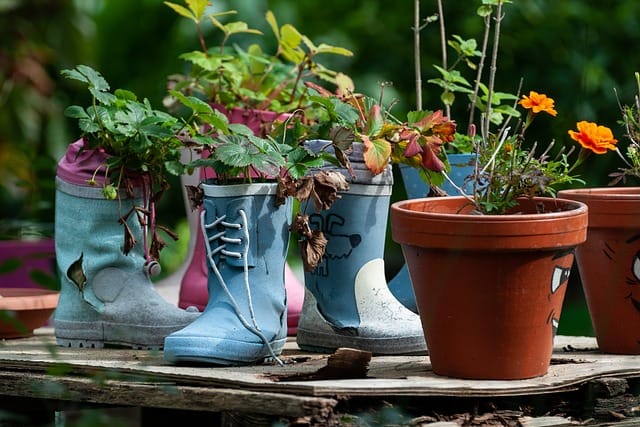
Grow Your Own Way:
Remember the most important rule of all: grow your own way! There are no hard and fast rules for container gardening. It’s all about experimenting, having fun, and creating a space that reflects your personality. So, go ahead, mix and match different plants, try new things, and break the mold. Your container garden is your personal oasis, so make it your own and don’t forget a dash of sass goes a long way!
Troubleshooting Container Gardening for Vegetables
Let’s talk about the inevitable hiccups that can happen in any garden–because even the sassiest gardener faces a few challenges now and then. We’re talking troubleshooting and I’m here to help you navigate those bumpy roads with a sprinkle of sass and brilliant solutions.
Common Problems:
First up, yellowing leaves. Uh oh, your plant’s leaves are turning yellow? Don’t panic! It could be a sign of over-watering, under-watering, nutrient deficiency, or even a pest infestation. Next up, pests. Those little buggers can wreak havoc on your precious veggies–they’re all unwelcome guests in your container garden. And finally, lack of fruit. You’ve babied your tomato plant, given it sunshine and water, but no tomatoes? Frustrating, right? It could be a pollination issue, a deficiency, or even just the weather.
Solutions and Sass:
So, what’s a diva or dude to do? For yellowing leaves, first check the soil moisture. Is it soggy? You’re over-watering. Dry as a bone? You’re under-watering. If the moisture is good, check for nutrient deficiencies. A little fertilizer might be just what your plant needs. And of course, check for pests!
Speaking of pests, let’s get sassy. For aphids, try blasting them off with a powerful stream of water. For spider mites, neem oil is your best friend. And for slugs? Well, let’s just say they have a weakness for beer. Set out a shallow dish of beer, and they’ll crawl in for a little “party” they won’t soon forget. Just sayin’.
As for a lack of fruit, for tomatoes, try gently shaking the plant to help with pollination. You can also use a small brush to transfer pollen from one flower to another. If you’ve ruled out pollination and pests, check your fertilizer. A lack of phosphorus can prevent fruiting. A lack of calcium can cause blossom end rot. And remember, sometimes it’s just the weather. Be patient, and your plants will reward you with delicious fruit.
Remember, every problem has a solution, and with a little sass and a lot of know-how, you can overcome anything. Don’t let a few hiccups discourage you. Gardening is a journey, not a destination. So, embrace the bumps in the road, learn from your mistakes, and keep growing your own way!
Container Gardening for Vegetables–Your Tiny Space, Big Taste Adventure
We’ve reached the end of our container gardening adventure! But don’t you worry, this is just the beginning of your container gardening journey. Let’s recap, shall we? We’ve talked about everything from choosing the right containers and soil to watering, fertilizing, and dealing with those pesky pests. We’ve even touched on design tips to make your container garden a showstopper. Container gardening for vegetables isn’t just about growing food; it’s about growing your way.
Remember, gardening should be fun! It’s about getting your hands dirty, connecting with nature, and enjoying the fruits (and veggies!) of your labor. And the best part? You don’t need a sprawling backyard to enjoy fresh, delicious produce. Whether you have a tiny balcony, a sunny windowsill, or a postage-stamp-sized patio, container gardening can bring the joy of homegrown food to any home.
So, what are you waiting for? Grab a pot, some potting mix, and a few seeds or seedlings, and get started! Don’t be afraid to experiment, try new things, and make mistakes. That’s how we learn and grow (pun intended!). Embrace the “grow your own way” philosophy, and add your own personality to your container garden.
Now, I want to see your creations! Share your container gardening experiences and photos on social media using #dirtdivadiaries #growyourownway. Let’s inspire each other and show the world just how fabulous container gardening can be! I can’t wait to see what you grow! Now go forth and conquer those containers!
And don’t forget, we are here every step of your journey to help, enjoy your successes, commiserate our shared mishaps, or even when you just need more sass in your life.
Disclaimer: This post is for informational purposes only and should not be construed as health, wellness or nutrition advice. Please see our full disclaimers here.


Leave a Reply